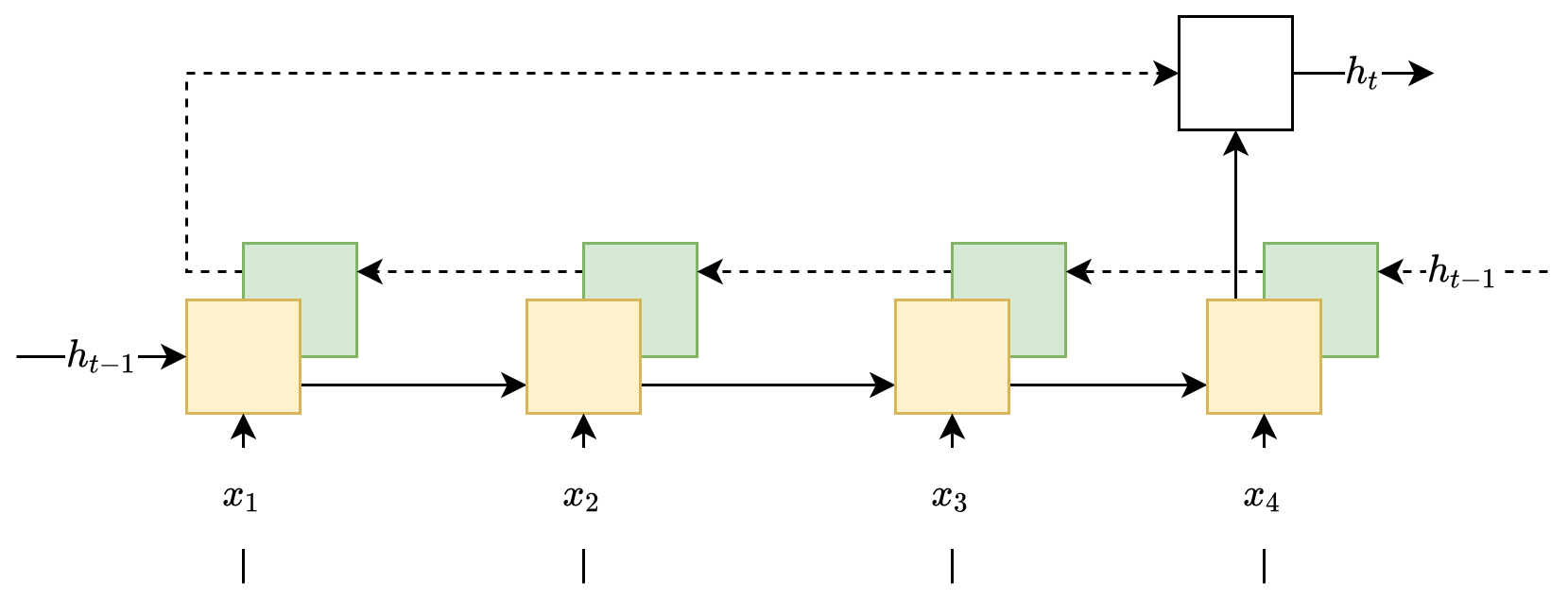Bidirectional RNNs, LSTMs, and GRUs (BiRNN, BiLSTM, and BiGRU) are not so different from their unidirectional variants. The difference is that these networks use not only data from the past, but also from the future of the series. When we work with a sequence in a recurrent network, we usually feed one element followed by the next and pass on the previous state of the network as the input. The natural direction of this process takes place from left to right.
In many cases, however, the sequence has already been given in its entirety from the very beginning. Due to this, we can pass it to the neural network from both sides with two neural networks, and then combine their result:

This architecture is called a bidirectional RNN. Its quality is even higher than ordinary recurrent networks because there is a broader context for each element of the sequence. There are now two contexts – one comes before, while one comes after. For many tasks, this adds quality, especially for tasks related to processing natural language.
